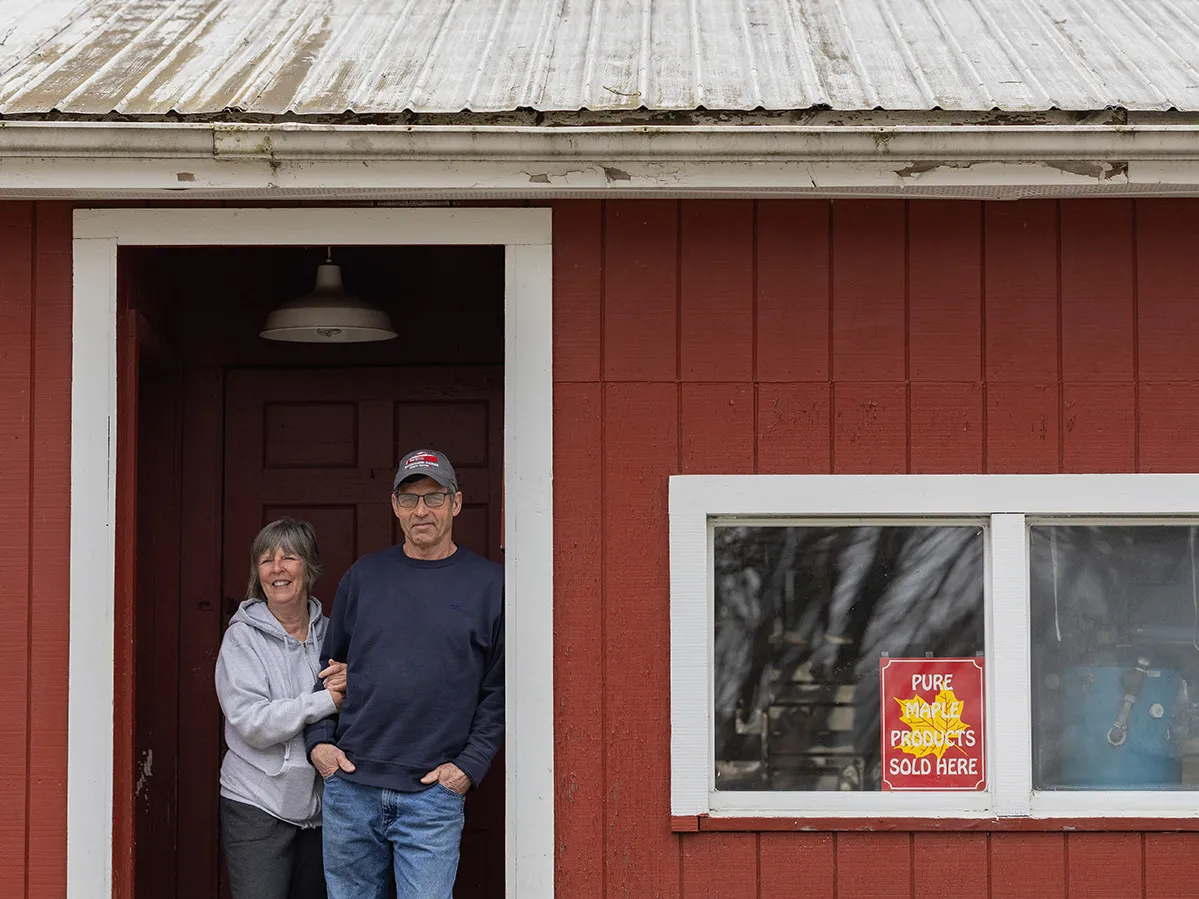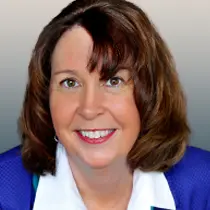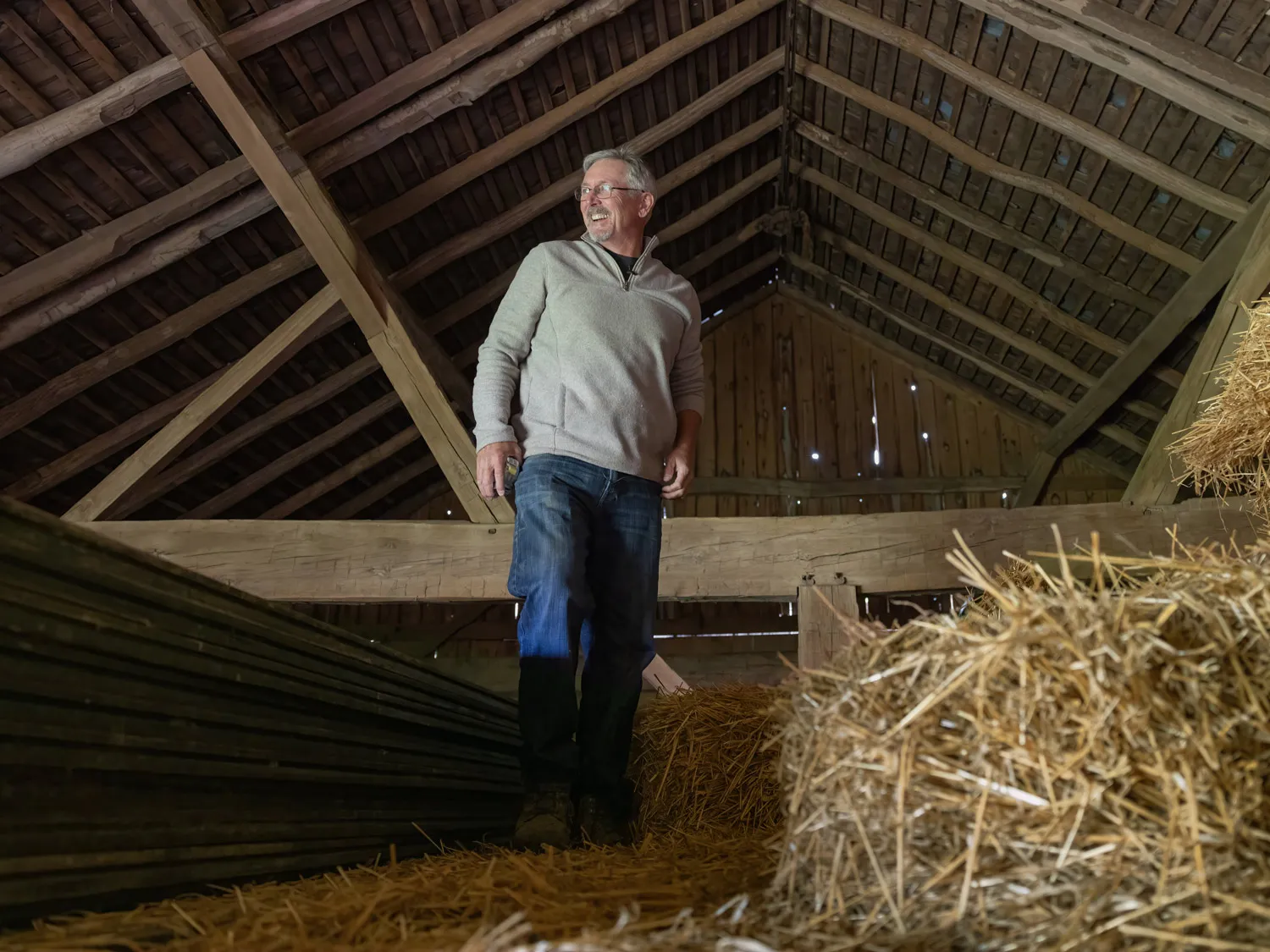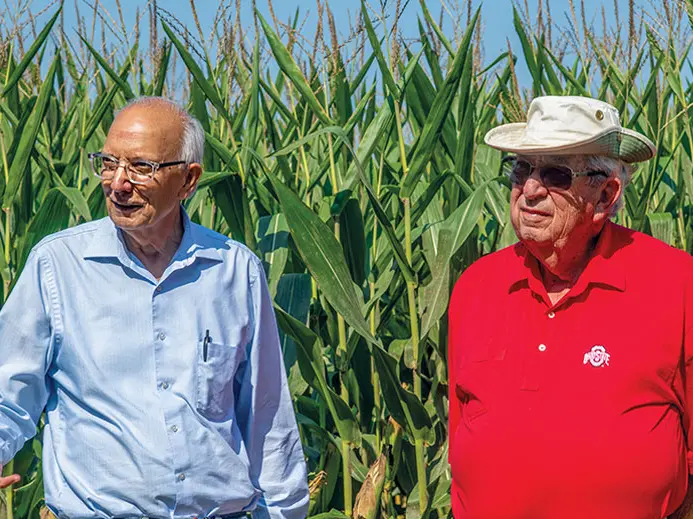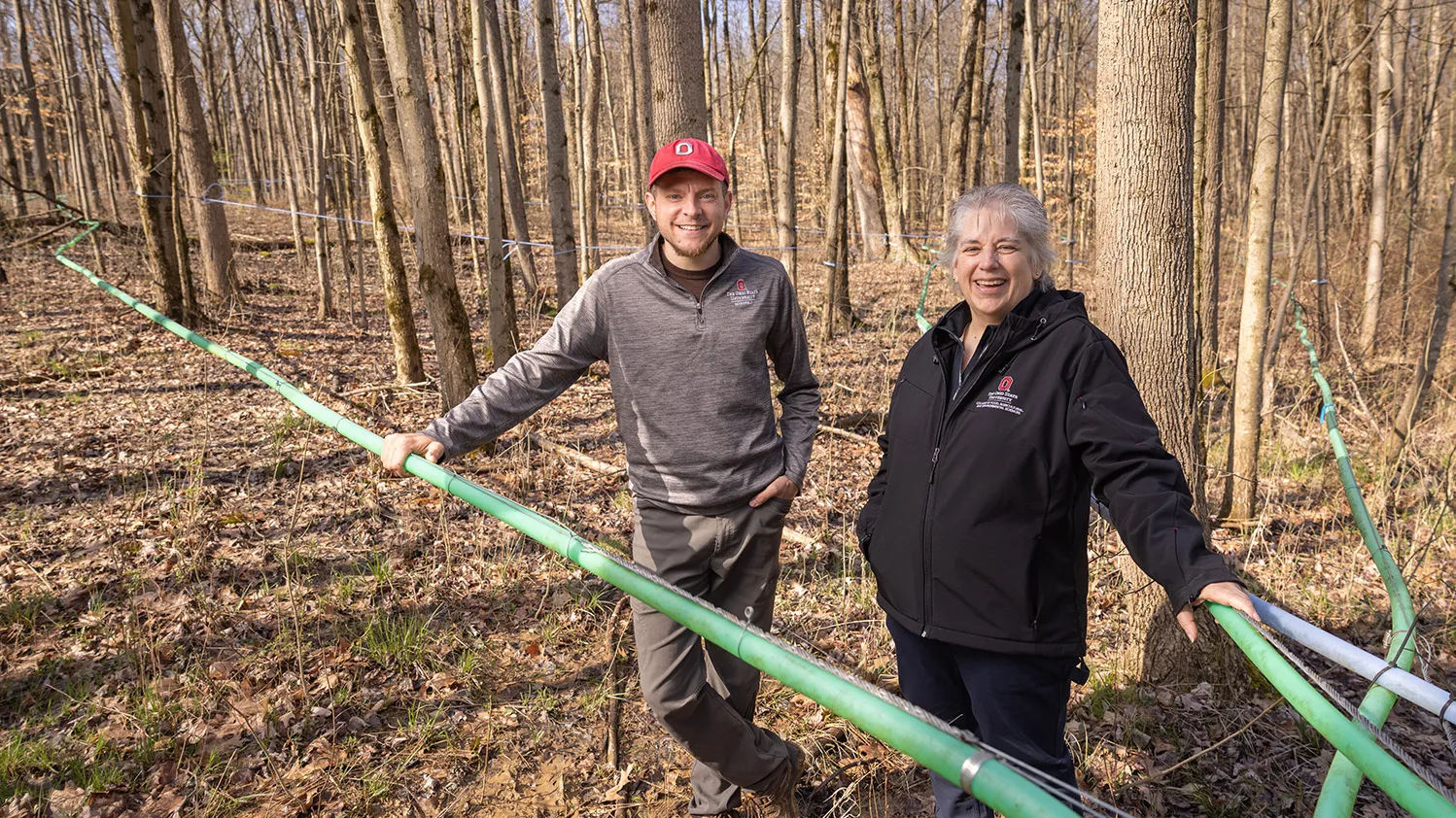

Sweet work
An Ohio State program provides delicious maple syrup and big lessons for students and producers.
“It’s what Extension’s role has always been, to take what we learn and help people apply it in their lives.”
Tapping a resource
Right away, Kathy Smith ’85, ’89 MS, director of Ohio State’s Woodlands Stewards program, recognized how a sugar bush could boost the university’s efforts to help landowners throughout the state. “Research is part of the mission of a land-grant university,” Smith says. “And it’s what Extension’s role has always been, to take whatever we’re learning and help people apply it in their lives, whether that’s a woodland owner, a maple producer or a member of the public.”
Ohio has deep roots in the maple syrup industry, Smith says. Ohio settlers first learned how to make maple syrup from Native Americans, who had been tapping trees to make maple sugar and syrup for centuries. From there, the industry took off, as maple was the only affordable sweetener at the time.
“Ohio was the top maple syrup producer in the 1860s and a leading producer for many years,” Smith says. And from the university’s earliest days, faculty and Extension agents have provided education and resources to Ohioans involved in agriculture. While Ohio no longer dominates the industry—Vermont, New York and Maine far outpace it—maple syrup contributes about $5 million to the state’s economy each year, economists estimate.
Smith saw the sugar bush as a great demonstration project. “A lot of woodlands owners are looking for income opportunities other than timber,” Smith says. “They may not want to harvest timber, or maybe their trees aren’t ready. So they could visit our site and see if this was something they’d like to do themselves.”
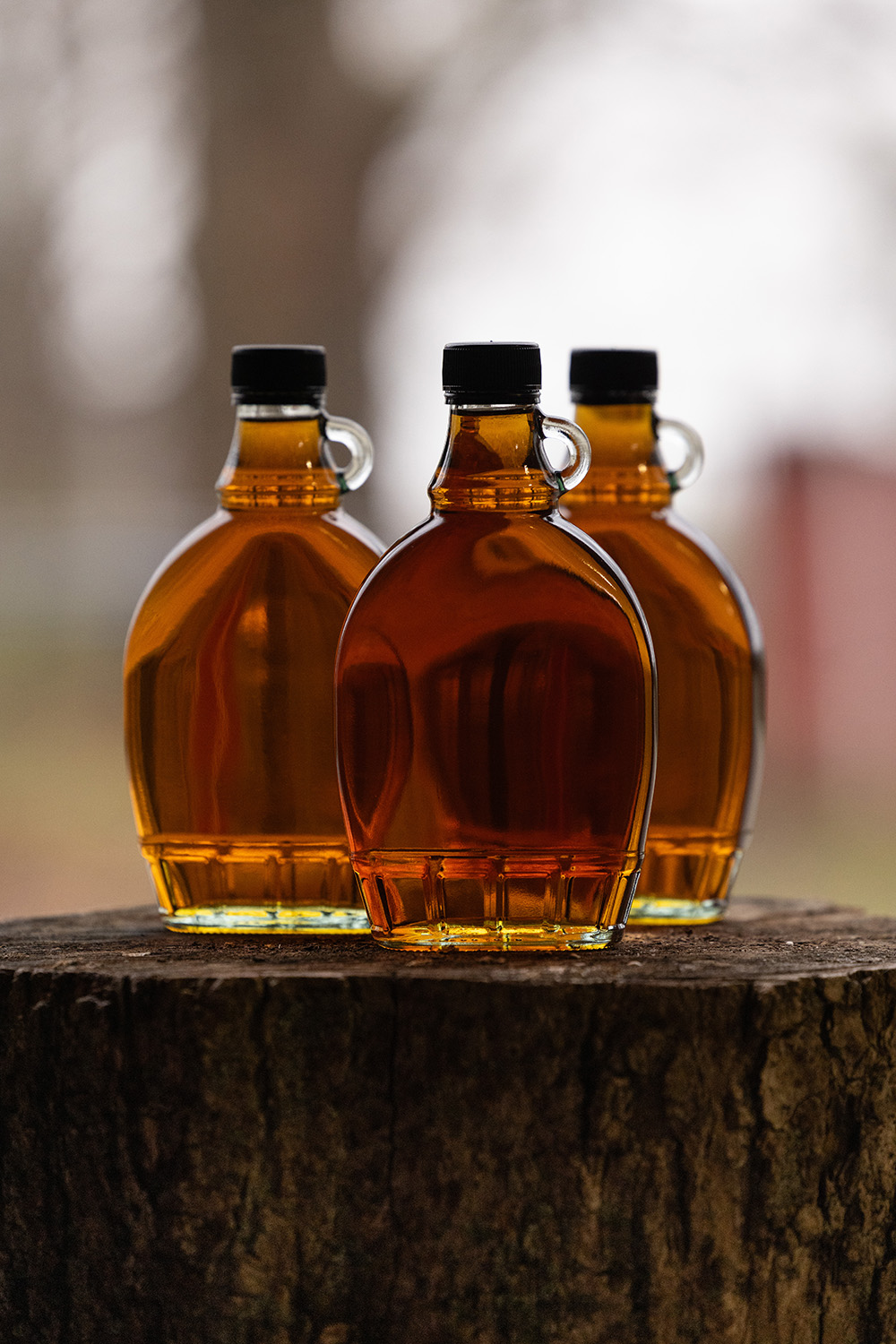
But before anyone could start tapping trees in Mansfield, supporters needed funding. In 2018, Ohio State staff contacted a well-known maple supporter, John Patterson. At the time, Patterson was a state representative from Geauga County, where one-third of Ohio’s maple syrup production takes place.
Patterson jumped on board. “Research is critically important when you’re talking about advancing a food crop, which maple syrup is,” says Patterson, now executive director of the USDA Farm Service Agency in Ohio. “We rely on Ohio State for all kinds of research related to agriculture, and I thought it would be great for Ohio State to expand its research and outreach in maple syrup.”
Patterson, who remembers tapping maple trees in his backyard as a child, cited other benefits. “Maple syrup is a driver in the economy,” he notes. From selling syrup and maple products to hosting festivals that draw thousands of tourists, maple producers contribute significantly to the state.
Once Patterson secured state funds, the university was ready to commit money and staff. The various forces—faculty, staff, students, maple producers and legislators—converged in 2019, when Ohio State bottled its first maple syrup. Nearly six years later, the program is so successful, it pays for itself and supports student scholarships and jobs, Karns says.
Anthony Tambini ’20 worked as a maple research assistant, an experience that opened new career options for him. “I ended up starting a land and habitat management company,” he says. “And Gabe Karns was the one who encouraged me, saying, ‘You’re really good at this; you should do it.’ I got an entire career out of that job experience.”
Tambini so enjoyed his work with the program that he took time off from his job last season to help tap trees in the Mansfield sugar bush. “I wanted to give back to a program that gave so much to me,” he says, “and I wanted to see how the woods were doing.”
Maple Madness
On a cold, rainy day in March, visitors to Mansfield’s sugar bush find that the woods are just fine. About 100 people arrive on campus to participate in the statewide Maple Madness tour, a yearly event. Smith serves fat, fluffy pancakes to guests, who douse them with Ohio State syrup, while Karns leads tours in the woods.
“The process is the same, whether you’re using metal buckets or a vacuum-assisted tubing system,” Karns says. “You tap the trees, collect their sap and boil it into syrup.”
Demonstrating the process, Karns drills a small hole into a tree and attaches a spout. As liquid dribbles out, he explains that tree sap is mostly water. “You need a lot of sap to make syrup. It takes about 40 gallons of sap to get 1 gallon of syrup.”

A network of plastic tubes carries the sap to a tank in a shed, where a piece of equipment called a releaser shoves it into a collection tank. When the tank fills, Karns calls Roger Gortner, a retired Ohio State staff member and owner of Gortner Maple in West Salem, Ohio. A loyal volunteer with the program, Gortner takes the sap to his facility to boil it in an evaporator.

During Maple Madness Days, Karns uses a small evaporator, similar to a wood-fired stove, to showcase the process. As the temperature rises, the sap begins to boil in the attached pan, releasing clouds of steamy sweetness into the air and thickening into a dark, thick syrup over several hours.
Along the way, Karns measures the liquid’s sugar content, which starts at 2 percent and needs to rise to 66 percent to be labeled pure maple syrup. The work requires precision and patience, but it’s worth it, says Les Ober, an Extension educator who has made syrup on his Northeast Ohio farm for 40 years.
This photo shows Dan Brown, left, and Karns preparing syrup for filtering and bottling.

“It’s addictive—getting out in the spring, working in the woods,” he tells folks gathered at the Mansfield site. “You know, it’s hard to tell somebody why you would go completely nuts about this, but you do.”
Not to mention the educational value, Ober says. “The science of maple syrup—it is physics, botany, microbiology, chemistry, engineering. Everything comes together when you start running a sugar bush.”
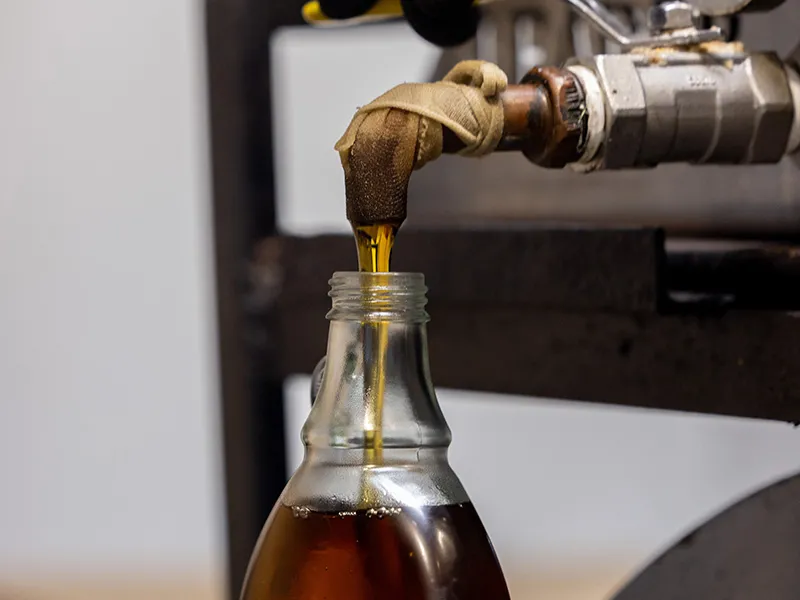
You can learn those lessons whether you’re a large maple syrup producer or a hobbyist tapping trees in the backyard. Steven Solovey ’07 and Angela Rospert ’08, ’12 DVM brought their two young daughters to Maple Madness Days. They live on a farm in Crestline, Ohio, not far from the Mansfield sugar bush, and tap trees on their property, which has been in the family since 1875.
Solovey has long ties to sugaring. “I use my grandfather’s kettle, and he lived to be 99 years old,” Solovey says. Several years ago, Solovey enrolled in a maple syrup workshop hosted by Ohio State, and he stays up to date by reading the university’s maple blog.
At the Maple Madness Tour, Solovey wants to show his children how professionals use plastic tubing to carry sap versus the buckets he and his family tote to tap their trees. He hopes to expand their understanding of how food comes from nature, not just from the grocery store. Plus: “It’s like magic,” he says. “It starts out as a clear liquid with almost no taste, and then I boil it, and it changes color and turns into a sticky, sweet syrup.”
During the upcoming spring semester, 10 years after Ohio State students first identified the Mansfield sugar bush, the university will offer a new undergraduate course on the art and science of maple syrup production. Not only will students get hands-on experience, they’ll learn a sustainable practice that Native Americans taught Ohio settlers long ago, a practice that Ohio State alumni can carry on in their own backyards and local communities.
Taste the syrup
Ohio State is set to participate in the 2025 Maple Madness Tour in early March, when you can visit the sugar bush and enjoy pancakes and syrup on the Mansfield campus. Details will firm up as that month gets nearer. Ohio State also offers maple syrup for purchase.

